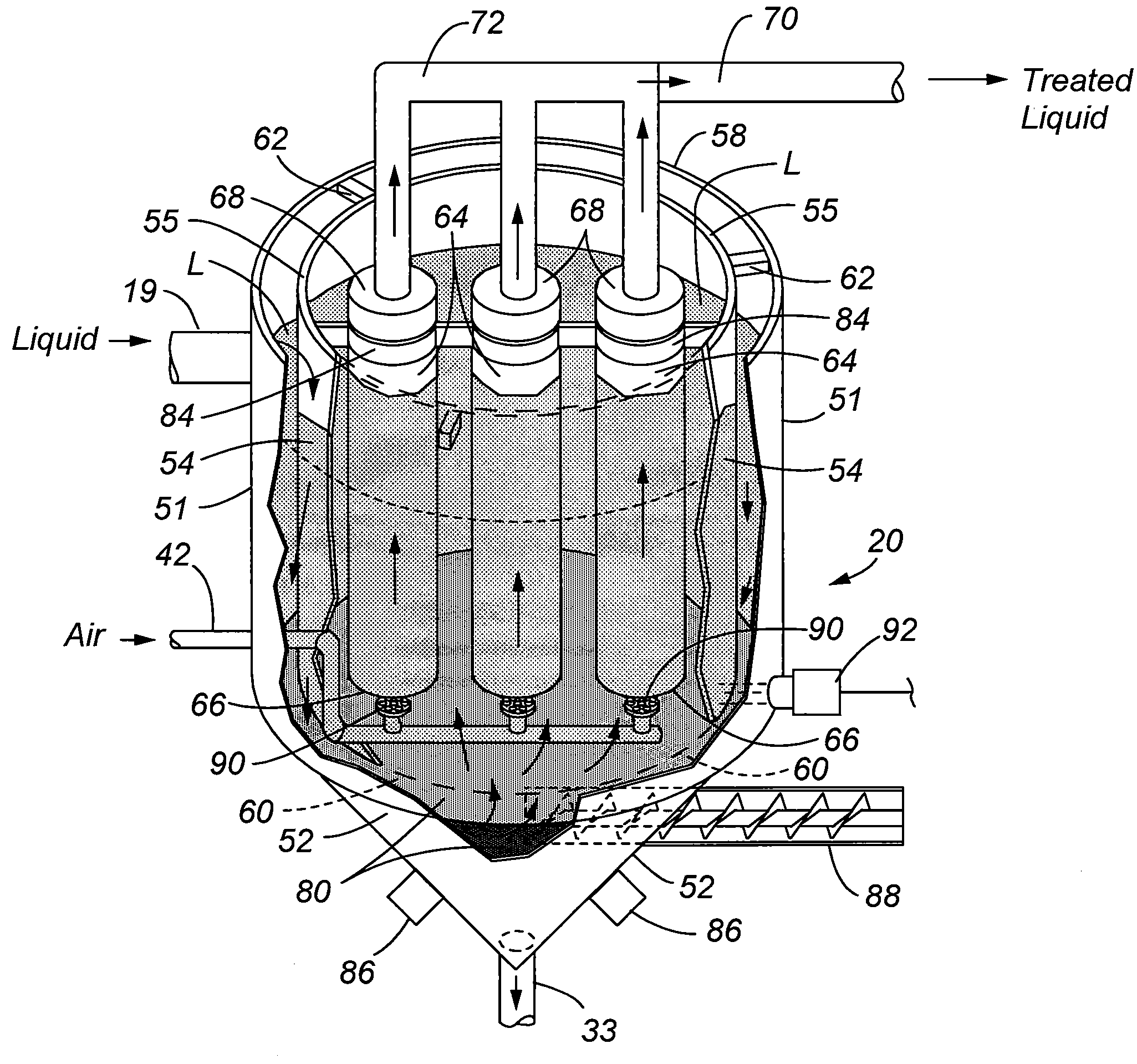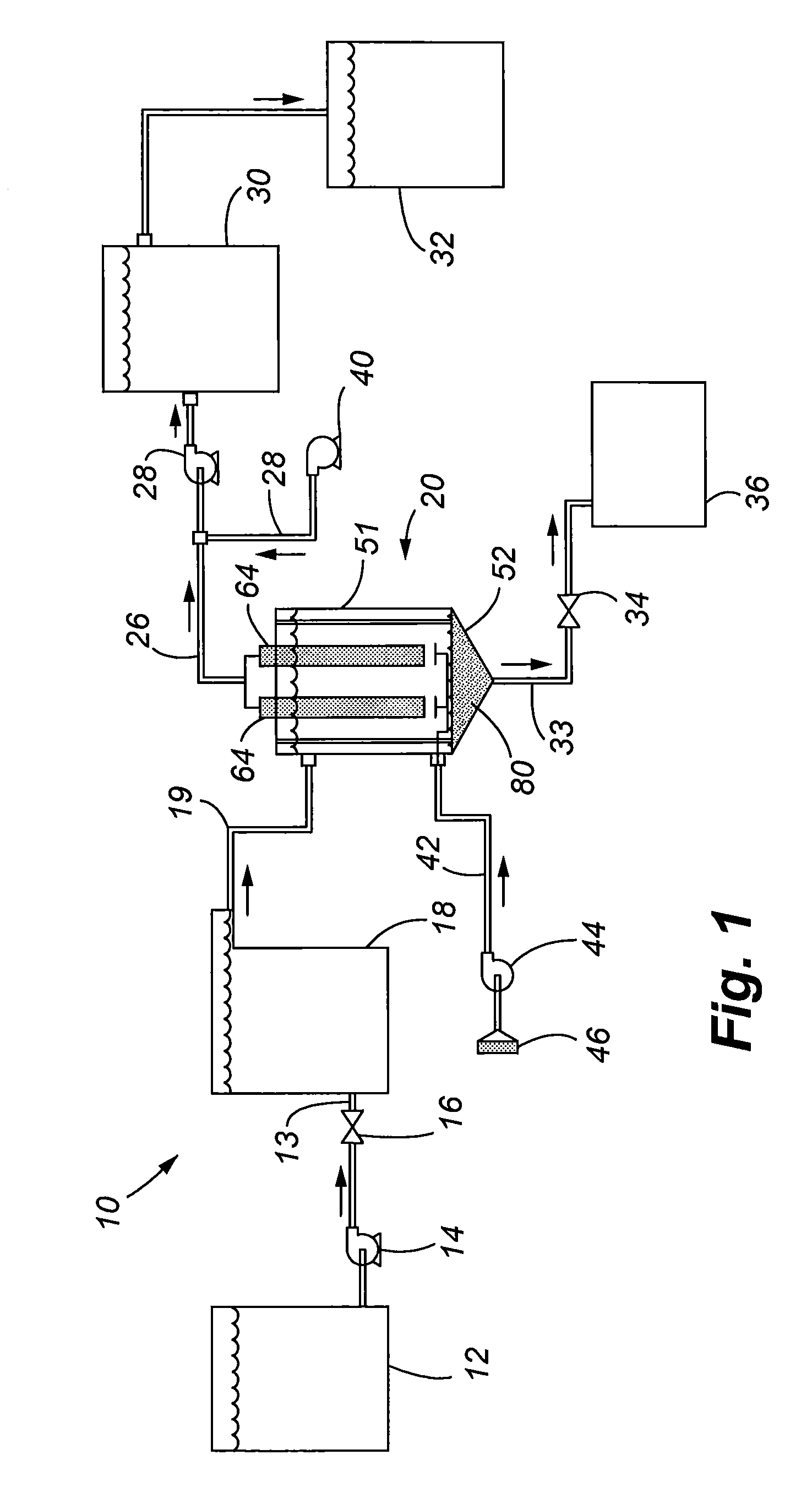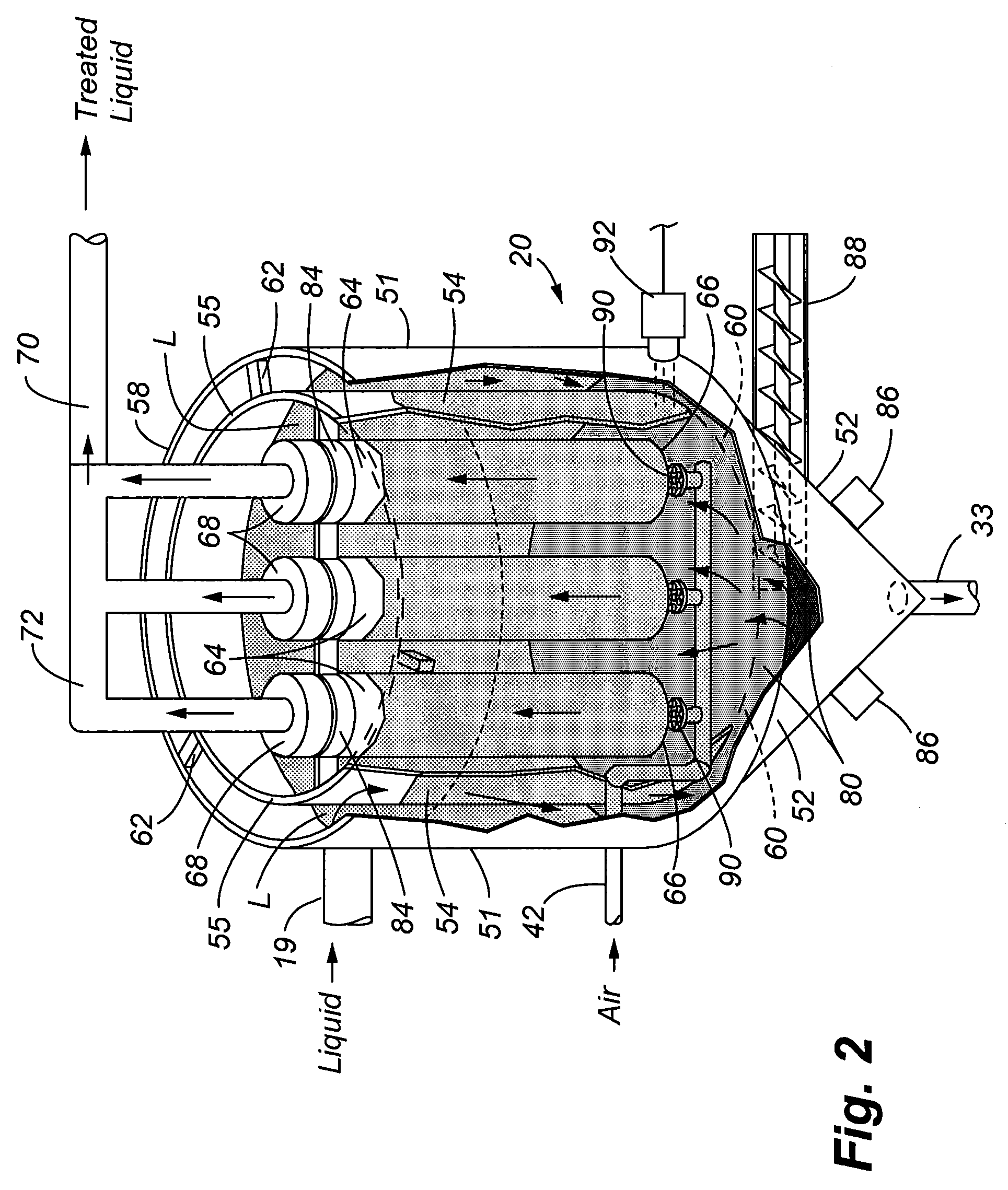Method and apparatus for treatment of contaminated liquid
a technology for contaminated liquid and treatment methods, applied in the direction of centrifugal force sediment separation, feed/discharge of settling tanks, machines/engines, etc., can solve the problems of slow processing capability of the treatment system, loosening of the material collected on the membrane surface, and clogging of the membrane, so as to facilitate the flow of liquid and achieve the effect of reducing the density of the sludge blanket, occupying less space, and facilitating the flow of liquid
- Summary
- Abstract
- Description
- Claims
- Application Information
AI Technical Summary
Benefits of technology
Problems solved by technology
Method used
Image
Examples
Embodiment Construction
[0029]Referring to FIG. 1, a system 10 in accordance with the present invention is illustrated comprising a number of components that are used to provide treatment for the liquid, which may include water, or other liquids that are used in industrial and commercial purposes. The system 10 can be incorporated into yet a larger treatment system designed to specifically treat for removal of targeted contaminants. Thus, it shall be understood that the system 10 of the present invention can either be a stand-alone system, or can be incorporated within yet a larger treatment system.
[0030]FIG. 1 more specifically illustrates a first holding tank / reservoir 12 that provides the contaminated liquid to be treated. The liquid is conveyed to an electrocoagulation unit 18 by a pump 14 in which a control valve 16 regulates the flow of liquid through the conveying line 13. The electrocoagulation unit 18 may be conventional, such as the ones illustrated in the U.S. Pat. No. 7,211,185 entitled “METHOD...
PUM
| Property | Measurement | Unit |
|---|---|---|
| density | aaaaa | aaaaa |
| vacuum force | aaaaa | aaaaa |
| chemical | aaaaa | aaaaa |
Abstract
Description
Claims
Application Information
 Login to View More
Login to View More - R&D
- Intellectual Property
- Life Sciences
- Materials
- Tech Scout
- Unparalleled Data Quality
- Higher Quality Content
- 60% Fewer Hallucinations
Browse by: Latest US Patents, China's latest patents, Technical Efficacy Thesaurus, Application Domain, Technology Topic, Popular Technical Reports.
© 2025 PatSnap. All rights reserved.Legal|Privacy policy|Modern Slavery Act Transparency Statement|Sitemap|About US| Contact US: help@patsnap.com



